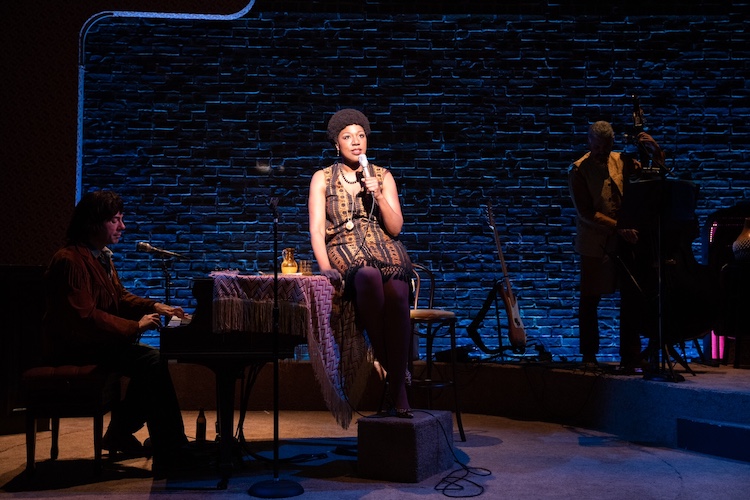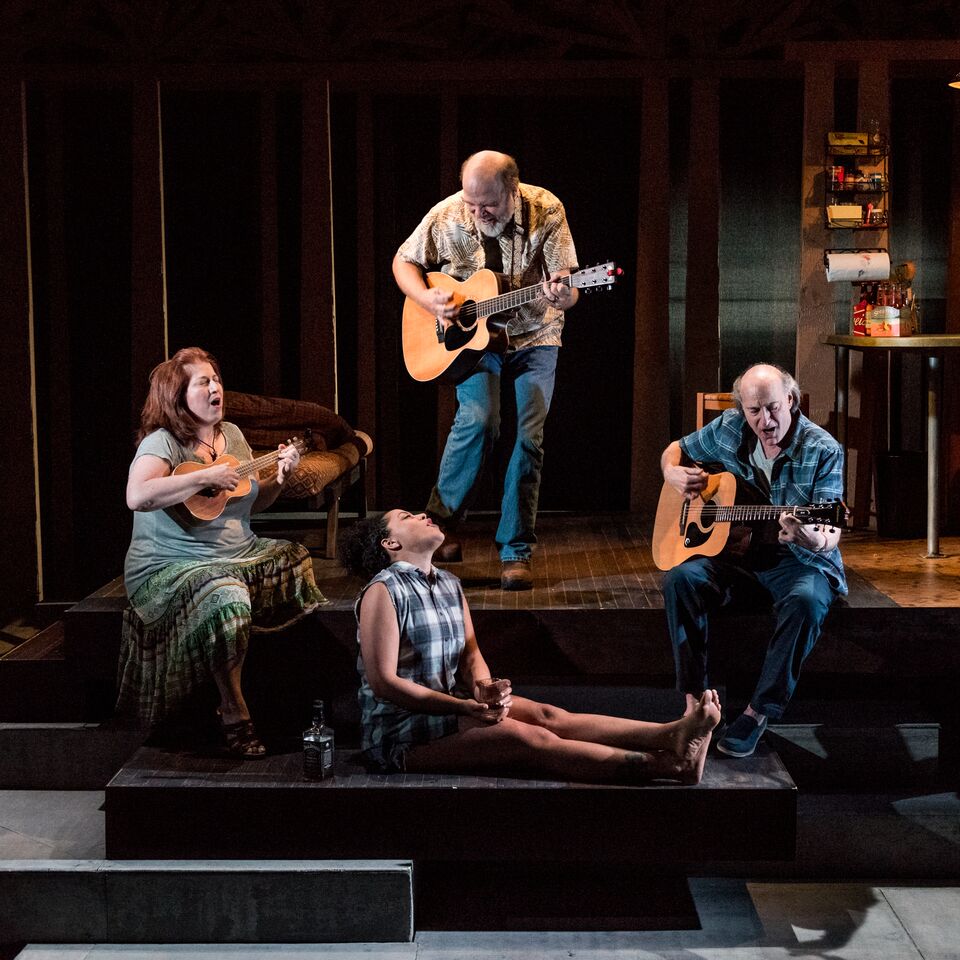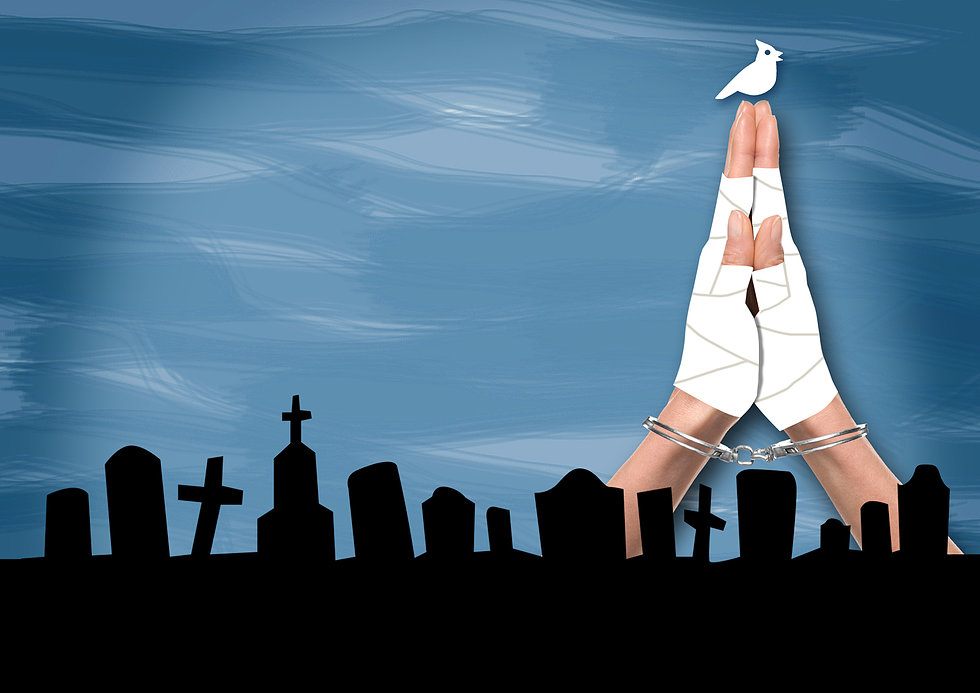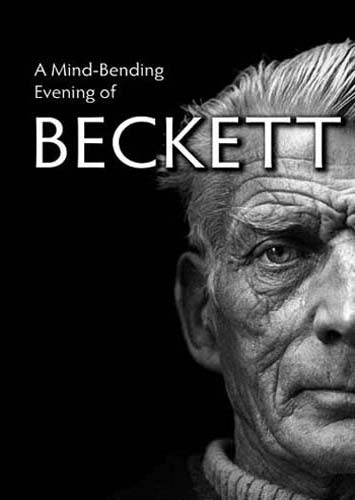By Marilyn Lester . . .
There’s a show business axiom that drama is easy, comedy is hard. Well, biography is harder still and portraying a legend ups the game even more—biography is an open invitation to sallies of criticism at large. How delightful, then, that Laiona Michelle, powerhouse actor-singer and author of Little Girl Blue at New World Stages, zeroed in on the life of the iconic Nina Simone with smart choices in playing her. Michelle largely captures the essence of an exceedingly complex woman, avoiding outright copy-catting in this dazzling stage performance. For those unaware of Simone or her times, Little Girl Blue gives an excellent grounding and full enough picture of the person and the pre-internet world of yore—and that’s a success.
To embrace the story of Simone is to submerge deeply into civil rights and the turbulent journey of inequality on personal and societal levels. She led a much-documented life large and tumultuous, complicated by her bipolar disorder. Born in western North Carolina, as Eunice Kathleen Waymon, later professionally known as Nina Simone, she was an accomplished singer, songwriter, musician, arranger and activist—and profoundly aware at an early age of what being a Negro meant in the white South. Through her portrayal, Michelle conveys, with overtones of positivity and power, that this fight isn’t over.
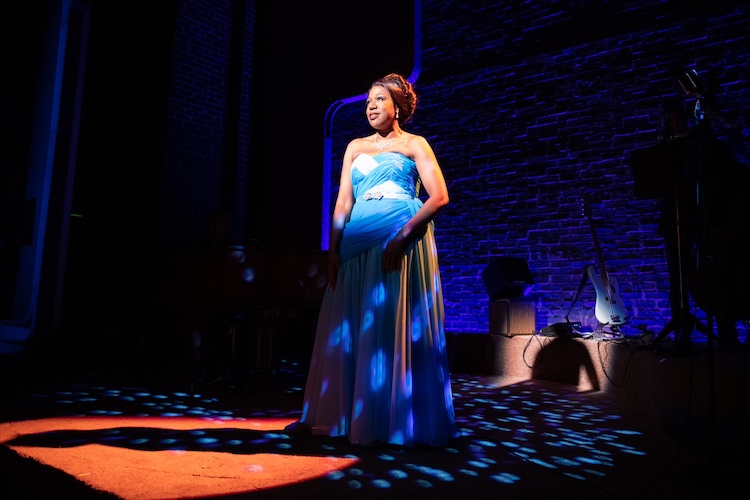
The aptly named Little Girl Blue (the title of Simone’s 1958 debut album), opens with a dramatic entrance from the rear of the theater—Simone and her trio, on their way to performing, are guarded by two white policemen (who remain stage left and right throughout Act One) keeping back a raucous crowd. Three days earlier, on April 4, 1968, the Reverend Martin Luther King, Jr. had been assassinated. The diva kept her date to play the Westbury Music Fair on Long Island. From this platform, Michelle calls forth the angry side of Simone, smartly weaving in biographical facts and personal life problems—such as with family and a troubled marriage—among the larger context of civil rights and the music that permeated and dominated. Playing solid supporting roles as actors in portraying Simone’s trio are talented musicians, Music Director-pianist Mark Fifer, bassist Saadi Zain and percussionist Kenneth Salter.
Conspicuous in the Act One “musical numbers” listing was the absence of one of Simone’s most important songs, “Mississippi Goddam.” It was written in June 1963 in response to the murder of activist Medgar Evers in Mississippi and the 16th Street Baptist Church bombing in Birmingham, Alabama, which killed four little Black girls. Instead, in the text, Michelle referenced it several times, but actually including the number would have made a stronger statement. Song choices, such as “My Father,” “Little Liza Jane” and “I Put a Spell on You” do their job in supporting the narrative, sung with intensity, power and interpretive skill by Michelle. In her vocals she wisely channels intent rather than copy-catting Simone. The same can’t be one-hundred-percent said of delivering the narrative. While the actress does a superb job of storytelling, the distracting physical histrionics could have been pulled back a notch or two.
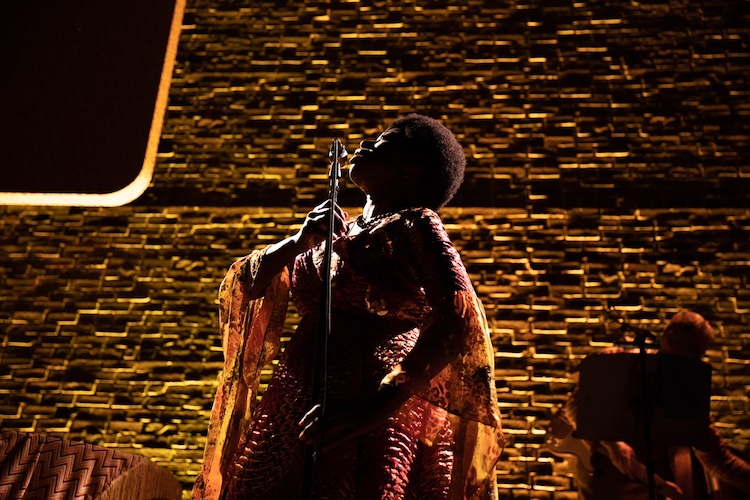

A scholarly and interesting sub-theme running throughout Little Girl Blue is the characterization of Simone by the media as “The High Priestess of Soul,” and by marketers who boxed her in as a jazz singer. As Michelle points out through the lens of Simone, the jazz categorization was one of the ways that whites denigrated and diminished Blacks. There is truth to this conception; as far back as the 1930s Duke Ellington, in his subtle way, intimated that, “jazz has always been like the kind of a man you wouldn’t want your daughter to associate with.” Simone’s genius and legacy acknowledges brilliance in crossing many genres, including jazz, plus blues, R&B, pop, folk and gospel music, as well as early training and excellence in classical music.
In Act Two, from the social turbulence of the 1960s, which also addressed women’s rights—and which Michelle does not ignore—the setting is the infamous 1976 Montreux (Switzerland) Jazz Festival. By this time, Simone had divorced her abusive husband, birthed a daughter and left the United States (in 1970) for good, traveling to the Bahamas, Liberia and elsewhere. By the time she got to Montreux she was broke, and according to reports of the day, seemed “skittish and disoriented.” Here, Michelle richly interprets the somewhat broken Simone, with musical numbers such as “Ne Me Quitte Pas,” “Black Is the Color (Of My True Love’s Hair)” and “I Think It’s Going to Rain Today” musically spotlighting her personal travails more than social activism.
Michelle’s characterization stops short of being mawkish, but also doesn’t allow for the vulnerability that Simone tried to hide from her public—also true in her rendering of the angry Simone of the first act. While a coup de maître of a performance, Michelle stops short of tour de force by that percentage of her portrayal that doesn’t go deep enough. Some comic relief throughout would have also elevated the presentation. If Act Two is a downer, the conclusion of Little Girl Blue is raised up by a powerful and hopeful ending. In “My Way,” Michelle makes a strong statement that despite the ups and downs, Nina Simone, in always being her own woman—her true authentic self no matter what the cost—ultimately triumphed.
Direction and “additional materials” by Devanand Janki served the piece well, with smart pacing and an effective arc of dramatic action. Also of high caliber is scenic design by Shoko Kambara, costume design by Ari Fulton, hair and wig design by Earon Nealey, lighting design by Dawn Chiang and sound design by Twi McCallum.
Little Girl Blue plays at New World Stages through May 22. Run time is 2 hours and 10 minutes, including an intermission. For tickets and more information, visit www.littlegirlblue.nyc
New World Stages is located at 340 W 50th St, New York, NY 10019, 212-239-6200
Photos: Julieta Cervantes


